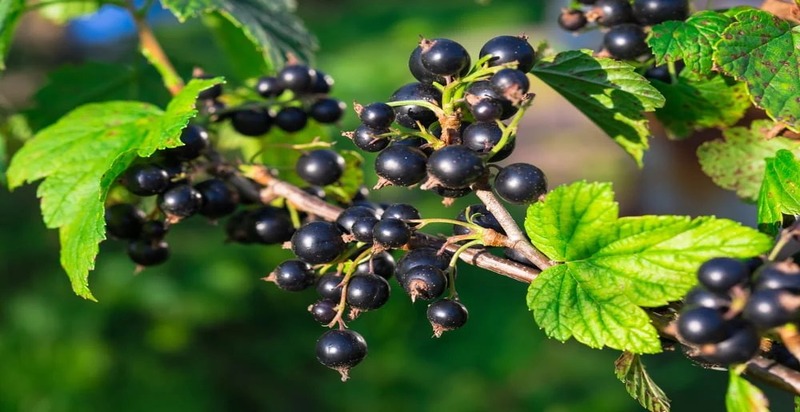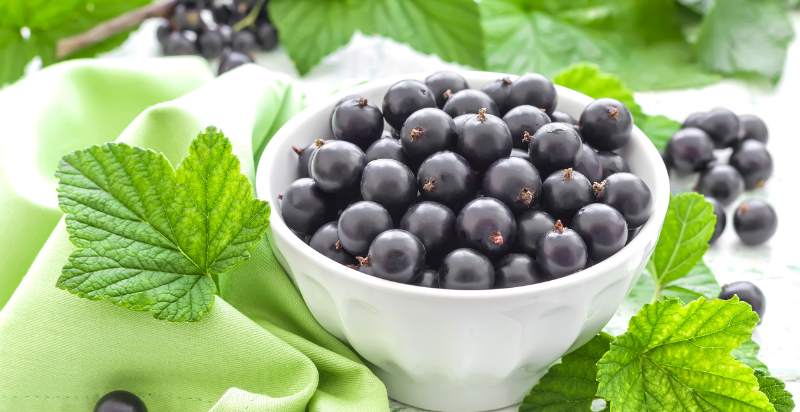Black currants, with their deep purple hue and zesty tartness, offer a symphony of health benefits. They have been revered for centuries as a natural remedy, used to soothe sore throats, combat colds, and ward off flu symptoms. Bursting with vitamin C, antioxidants, and essential minerals, black currants are not only a delight to the senses but also a boon to well-being. Whether enjoyed fresh or used in jams, jellies, pies, and desserts, black currants can enrich every dish with their vibrant flavor and numerous health advantages.
History and Origin:
Black currants have been used in folk medicine for centuries. The Ancient Greeks first noted them as an ingredient in cough syrups. Later on, they became popular in Europe, where they were used to make jams and jellies. In the 18th century, British doctors believed it was beneficial in treating scurvy due to its high vitamin C content. During World War II, American troops took black currant juice on their campaigns to prevent scurvy outbreaks. Today, black currant is still a natural remedy for various ailments such as colds and sore throats.

Description / Taste of Black Currant:
Black currants have a tart, sweet taste with a hint of muskiness. They are smaller than other berries, such as blueberries and raspberries. The flesh is juicy, and the skin is edible but slightly bitter. When cooked in jams or jellies, they become sweeter and more flavorful.
Seasonality / Availability of Black Currant:
In the United States, black currants grow well in cooler northern states, and their growing season extends from late spring to mid-summer. Regions like New York and parts of the Upper Midwest are known for black currant production, with fresh berries available during the peak summer months. However, fresh black currants are less widely available in other regions, so consumers often enjoy them in preserved forms like jams and jellies throughout the year.
The cultivation of black currants in the U.S. was historically restricted due to concerns about white pine blister rust. With the development of resistant cultivars, these restrictions have eased in many areas. Despite this, the market for fresh black currants remains niche, primarily found in specialty stores and farmers’ markets. As awareness of their health benefits grows, so does their popularity in the American culinary scene.
Black Currant Applications:
Black currants are often used in jams, jellies, and desserts. They can also be added to smoothies or yogurt for a nutrient-rich breakfast. In savory dishes, they can be used as part of a sauce or glaze. Black currant has a tart flavor that pairs well with sweet ingredients like honey, sugar, or maple syrup. They can also be used to make compotes, syrups, and chutneys.

Planting Black Currant:
These plants grow in cooler climates with well-drained, fertile soil that has a pH between 6.0 and 6.5. Planting should occur in early spring, once the ground is workable, in a spot that receives full sun to partial shade. Adequate sunlight is crucial for fruit production, while some shade can be beneficial in hotter regions. Black currants need space, with bushes typically spaced about 4-5 feet apart to allow for air circulation and growth. Incorporating organic matter, such as compost or well-rotted manure, into the planting hole can significantly enhance plant health and berry quality. Regular watering, especially during dry periods, and annual pruning to remove dead or diseased wood and to encourage airflow, are key to maintaining productive bushes. With proper care, black currant bushes can start bearing fruit by their second year, providing a delicious and nutritious yield for many seasons to come.
Storage Tips for Black Currant:
Fresh black currants should be stored in the refrigerator. They will keep for up to two weeks. Frozen or canned black currants can be stored at room temperature or in the pantry. For longer storage, they can be frozen for up to six months.
Nutrition Facts and Health Benefits of Black Currant:
Black currants are an excellent source of vitamin C, making them a great addition to any diet. They also contain calcium, phosphorus, iron, potassium, magnesium, and dietary fiber. The berries are high in anthocyanins which are powerful antioxidants that can help protect against disease. Additionally, they have anti-inflammatory properties that can reduce the risk of some chronic illnesses.
Black Currant Uses and Benefits:
Black currant is often a dietary supplement due to its numerous health benefits. The berries are rich in vitamins and minerals, ideal for boosting immunity and fighting illness. Additionally, their antioxidant properties make them useful in preventing cell damage from free radicals. Black currant has also been found to help reduce inflammation and relieve allergies. Furthermore, the fruit can help improve digestive health and is beneficial for managing cholesterol levels.

Conclusion:
Black currant is a small but powerful berry packed with vitamins, minerals, and antioxidants that offer numerous health benefits. It can be consumed fresh, cooked, or used as a dietary supplement to strengthen immunity, reduce inflammation, and manage cholesterol levels. Given its wide range of potential uses and benefits, black currant should be a part of your daily diet!
- Everything You Wanted to Know About Red Tamarillos - June 2, 2025
- A Guide to Tulips: Everything You Need to Know & More… - June 2, 2025
- Guanabana: Description, Flavor, Benefits, And Uses - May 27, 2025
